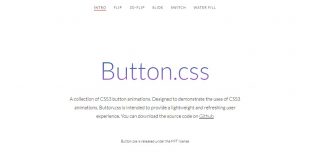Hello there, today in this article, we will discuss the Best Practices for Using ReactJS. So keep reading.
Are you tired of writing cumbersome and error-prone code for your web development projects? Do you want to streamline your development process and make it more efficient? Look no further than ReactJS, the powerful and versatile JavaScript library that is transforming the world of web development.
ReactJS has taken the web development community by storm, thanks to its component-based architecture, virtual DOM, and other innovative features. With ReactJS, developers can create complex user interfaces with ease, while also improving the performance and scalability of their applications.
But ReactJS is more than just a tool for improving web development—it’s also a way of life. Once you start using ReactJS, you’ll wonder how you ever managed without it. You’ll become a more efficient and productive developer, and you’ll never look back.
So if you’re ready to join the ranks of the ReactJS faithful, this article is for you. We’ll explore the basics of ReactJS, explain how it can transform your web development process, and provide some tips and best practices for using ReactJS effectively. And along the way, we’ll have some fun and maybe even crack a few jokes—because even when we’re talking about serious stuff like web development, it doesn’t have to be boring.
Also, you can check: 5 Reasons Why Vue Js Is Common Today.
Best Practices for Using ReactJS:
The Basics of ReactJS
ReactJS is a JavaScript library that allows developers to build dynamic and interactive user interfaces with ease. It was developed by Facebook and released in 2013 as an open-source project. ReactJS is based on a component-based architecture; which means that developers can break down the user interface into smaller, reusable components. This approach allows for more efficient and flexible web development, as developers can create complex applications using a set of reusable components.
One of the major benefits of using ReactJS for front-end development is its virtual DOM (Document Object Model) feature. This allows ReactJS to render changes to the user interface much faster than traditional JavaScript libraries. In addition, ReactJS makes it easy to manage the state of the application, allowing for better code organization and reusability.
How ReactJS Can Transform Your Web Development Process
The advantages of using ReactJS for web development are many. ReactJS can significantly improve the speed and efficiency of the development process, with faster rendering times, improved code reusability, and increased developer productivity. With ReactJS, developers can focus on building high-quality user interfaces and improving user experience, rather than spending time on repetitive and error-prone coding.
Another advantage of using ReactJS is its ability to simplify complex UIs. With ReactJS, developers can easily break down complex user interfaces into smaller, reusable components, making it easier to manage large-scale projects. This approach also helps improve code quality and organization, leading to more stable and maintainable code over time.
Modern web development trends also greatly fit ReactJS; such as mobile-first design and progressive web apps. Its ability to create responsive and flexible user interfaces makes it a popular choice for mobile web development. Additionally, the React Native framework allows for the development of native mobile applications using the same codebase as the web application.
In conclusion, ReactJS is a powerful tool that can transform the web development process. Its component-based architecture, virtual DOM, and other key features make it a popular choice for Reactjs development company to build complex, dynamic, and high-quality user interfaces. With ReactJS, developers can create better applications in less time, while also improving the user experience for end-users.
Best Practices for Using ReactJS
While ReactJS is a powerful tool for web development, it’s important to use it effectively to get the most out of its features. Here are some best practices for using ReactJS:
Use A Consistent Code Style and Formatting
This makes it easier for other developers to read and understand your code, improving collaboration and maintainability. There are several popular code style guides available for ReactJS, including the Airbnb style guide and the React official style guide.
Break Down Your UI Into Small, Reusable Components
This is one of the key benefits of using ReactJS, so take advantage of it! Try to avoid creating monolithic components that do too much, and instead break them down into smaller components that can be easily reused.
Use React Hooks For State Management
React Hooks were introduced in version 16.8 and have become the preferred method for managing state in ReactJS. Hooks allow for more flexible and easier-to-read code, while also improving performance.
Use A Linter and Static Type Checker
These tools can help catch errors and enforce best practices in your code. Popular options for ReactJS include ESLint and TypeScript.
Optimize Your Application For Performance
ReactJS already offers excellent performance, but there are always ways to improve. Use the React Profiler tool to identify performance bottlenecks, and consider using performance-boosting techniques like lazy loading and code splitting.
Use The Right Tools For Testing and Debugging
Testing and debugging are important parts of the development process, so use the right tools to make these tasks easier. Popular options for ReactJS include Jest for testing and React DevTools for debugging.
By following these best practices, you can make the most of ReactJS and create high-quality applications that are easy to maintain and scale over time. Remember to always be open to new ideas and approaches, and to stay up-to-date with the latest best practices and trends in the ReactJS community.
Conclusion: Best Practices for Using ReactJS
In conclusion, ReactJS is a game-changer for web development. With its component-based architecture, virtual DOM, and a powerful ecosystem of tools and libraries, ReactJS enables developers to create dynamic and interactive user interfaces with ease. It simplifies complex UIs, improves code reusability, and increases developer productivity, all while delivering high-quality applications with fast rendering times.
ReactJS is also a great fit for modern web development trends; such as mobile-first design and progressive web apps. Its flexibility and scalability make it a popular choice for developers looking to create responsive and user-friendly web applications that can be easily adapted to changing user needs.
While there is a learning curve to using ReactJS effectively, the benefits are well worth the effort. By following best practices for coding, testing, and optimization, developers can make the most of ReactJS and create high-quality applications that are easy to maintain and scale over time.
In short, ReactJS has transformed the web development process, and it’s not going away anytime soon. By embracing ReactJS and staying up-to-date with the latest best practices and trends in the ReactJS community, developers can create dynamic, scalable, and high-quality applications that delight users and drive business success.
Author Bio:-
Pratik is a creative content writer at Peerbits with a passion for all things digital. He has developed a wide range of content for clients in diverse fields such as technology, fashion, beauty, and health. His writing style is engaging, informative, and conversational, making his content relatable to all types of readers. He specializes in creating blog posts, articles, website copy, and social media content that captivates audiences and boosts brand awareness. When he’s not writing, he loves to spend his free time watching movies and playing sports.
 Free Web Resources , psd, mockups, & web templates Best WordPress Themes & Best Html Templates
Free Web Resources , psd, mockups, & web templates Best WordPress Themes & Best Html Templates








